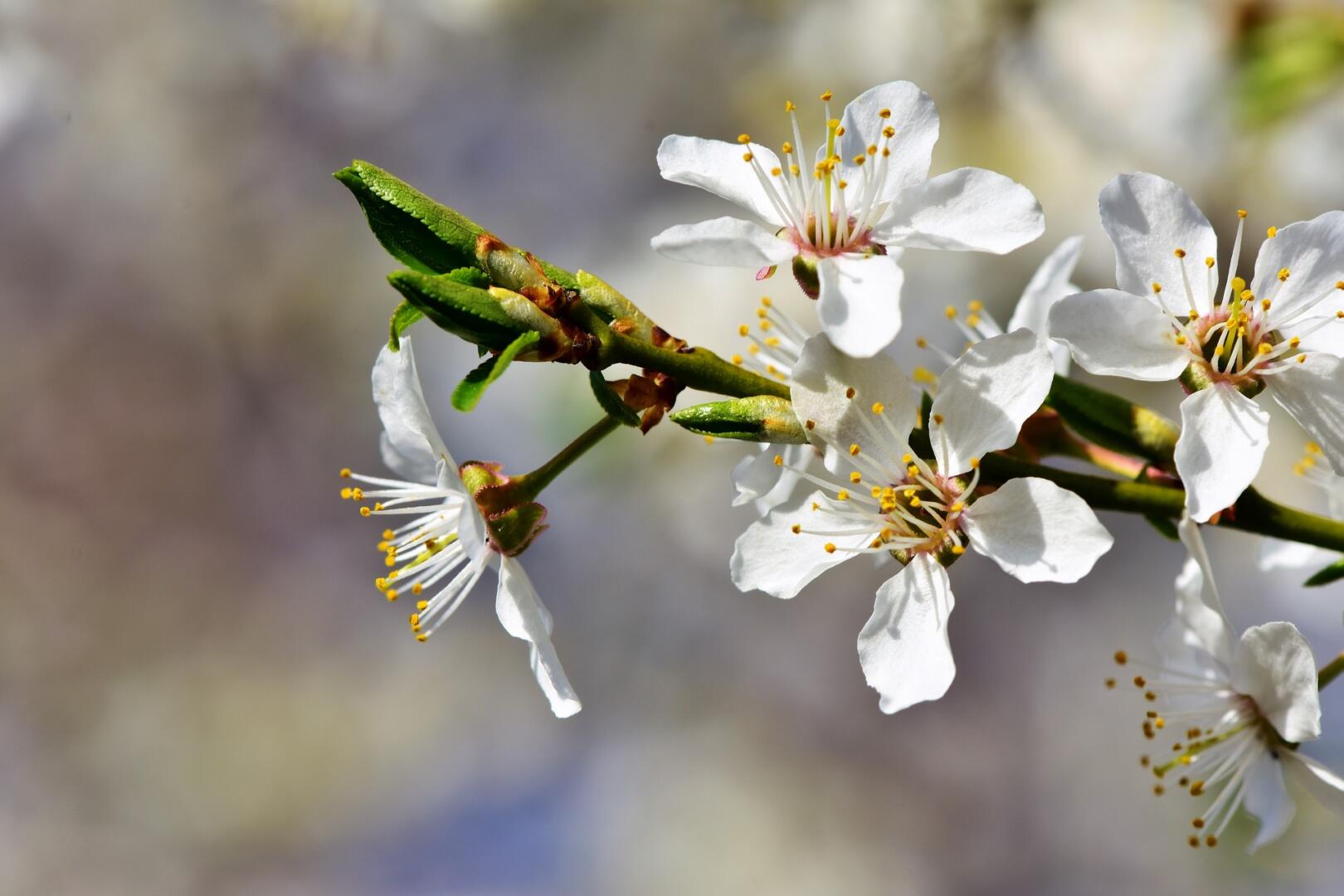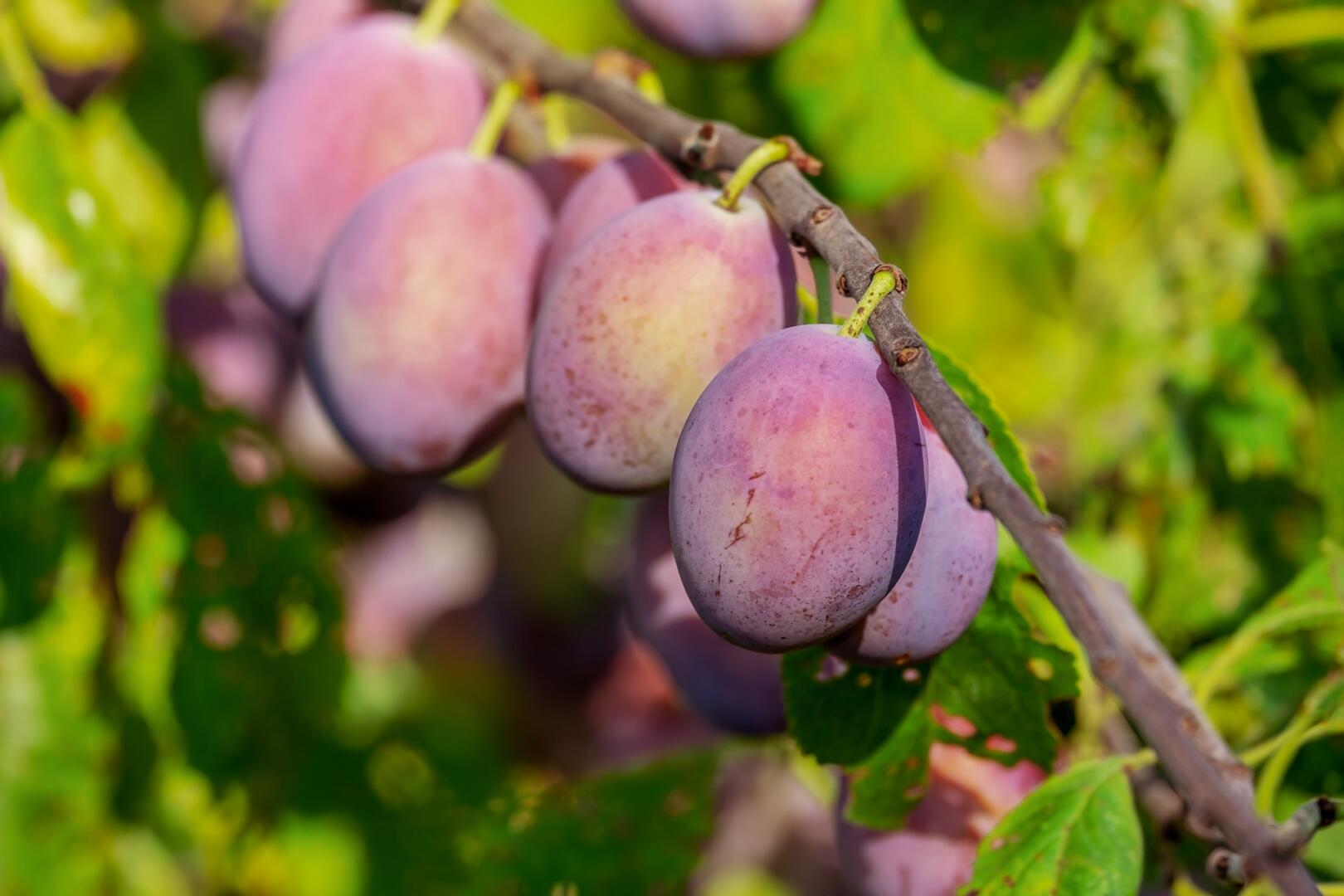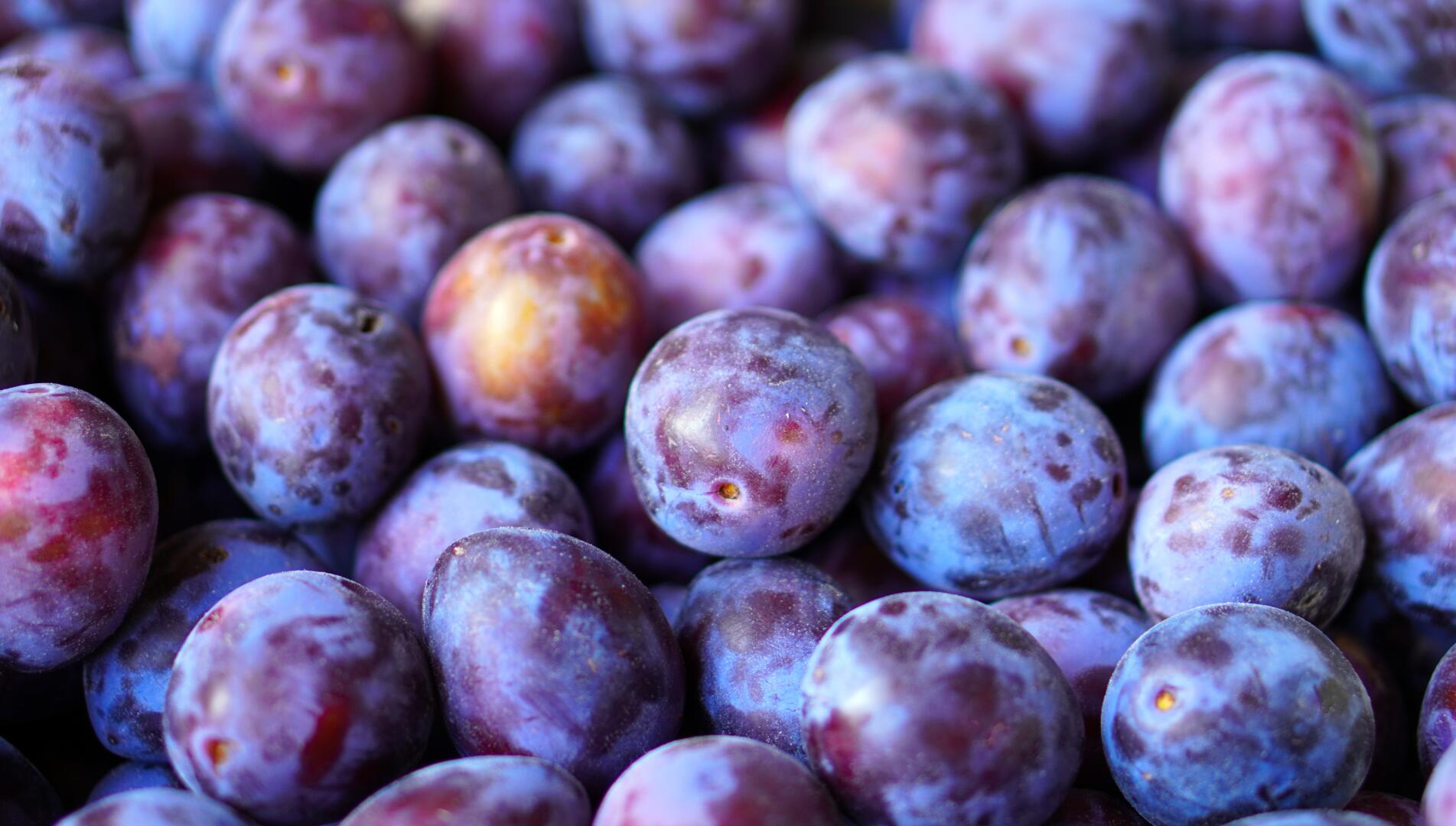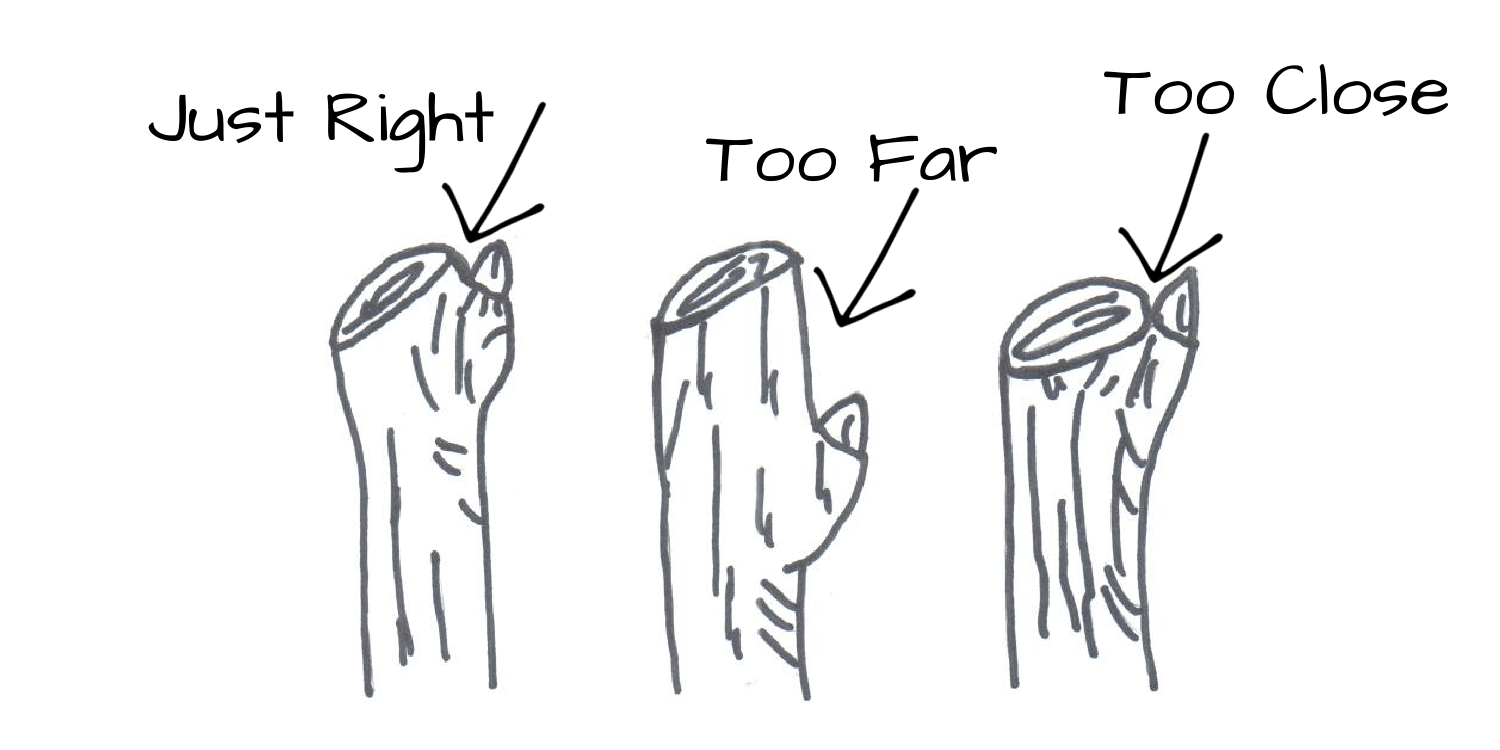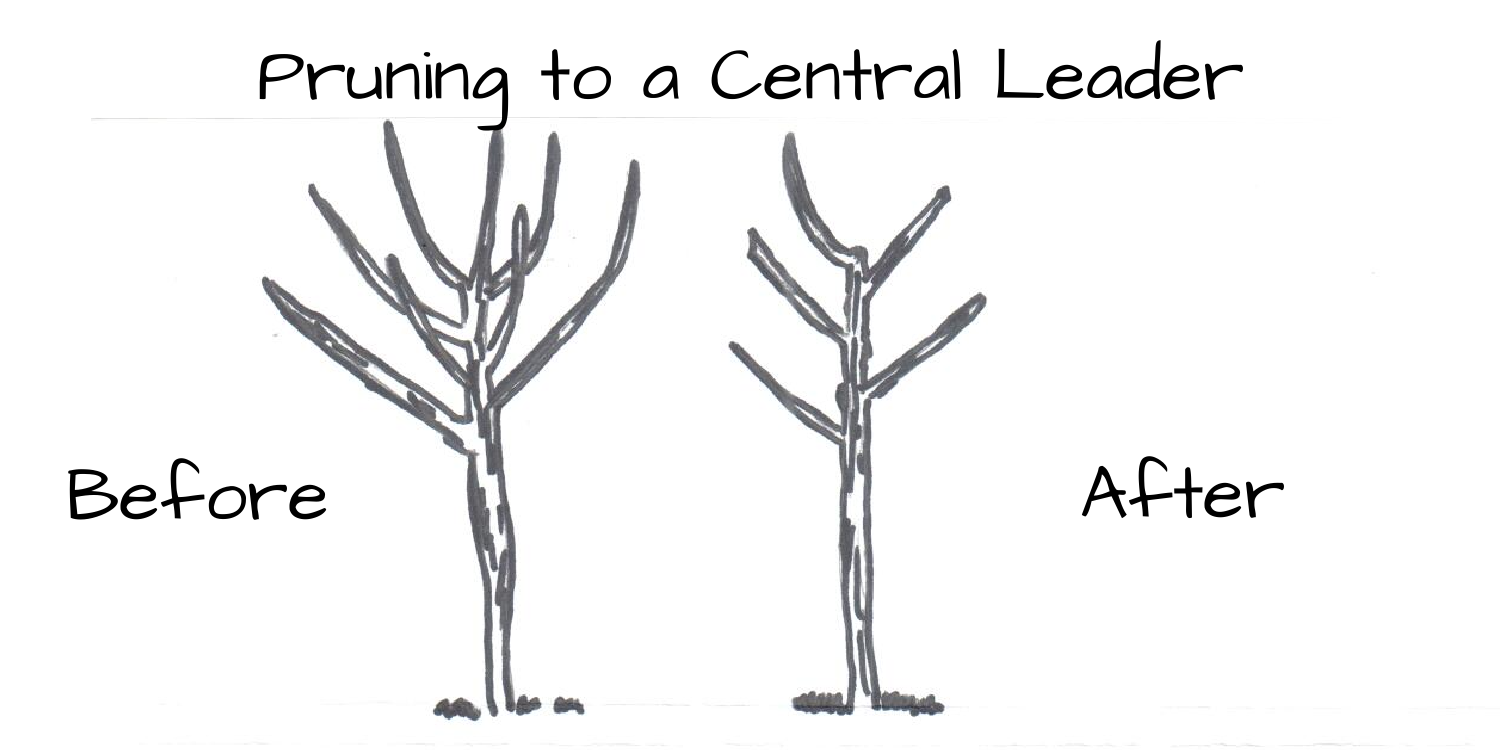A plum is a stone fruit that comes in a variety of colors with a sweet flesh. On most varieties, you will find fruit that fill every branch and limb, often ripening all at once.
When Planting Edibles, Always Start with a Plan:
Step 1: Comprise a wish list of plants.
Step 2: Experiment – Try something new!
Step 3: Know your land and location – Sunlight, space, and soil conditions.
Step 4: Growing methods – Raised beds, traditional rows, or containers?
Step 5: Choose your fruit – Start with trees, then berries and vegetables.
There is nothing more scrumptious than eating fruit harvested from your own crop, and your success begins with the planting site and method you use.
When you purchase your fruit trees from Herbein’s Garden Center, they should already be acclimated to our temperatures. If, however, you mail-order a plant, be sure to place them in a sheltered, shady area and gradually increase its time outdoors by 1-2 hours a day. After about 7 days, your plants should be ready to transplant into the ground.
BEFORE planting, consider these 4 things when planning your home orchard:
- Cross-pollination
- Sun and soil
- Surrounding area
- Space for future plants
Cross-pollination
Most plum trees are not self-pollinating, meaning they need to be pollinated from another flower on a different variety of tree. When another variety is present, you will notice a higher fruit yield. Because insects and wind carry the pollen between the blossoms, you should have the plum trees planted within 50’ of one another.
Plant in full sun (at least 6-8 hours) and well-draining fertile soil. Light is critical to fruit production and fruit quality and helps minimize fungal problems.
Well-draining soil will keep your plum tree’s roots healthy which is the foundation of a healthy tree. If necessary, add soil amendments to heavy or fast-draining soils. Add coco fiber potting medium or 1/3 peat, dehydrated cow manure or compost to the soil at planting time. Plum trees can be very adaptable and respond well to soil additives such as compost or fertilizers.
Check your soils pH before you dig. You can purchase a Penn State Soil Test Kit from us or a meter for a quick result. Plum trees need a soil pH between 6.0 – 7.0. Use Espoma Organic Garden Lime if your soil’s pH is too low, or Espoma Organic Soil Acidifier if the soil’s pH is too high.
Surroundings
Check for any wires, cables, underground utilities, or any other obstructions that could be a problem when your tree reaches full maturity. Once your tree is planted and is stable, it can be difficult to transplant later. If you start off by planting your fruit trees at the proper spacing, you can avoid any problems or issues in the future.
Spacing
If you are new to planting fruit trees. it’s best to start with just a few trees and add more later. Plan out where you would plant future trees and be sure you have adequate space for them.
Space Between Trees
- Dwarf: 8-10’
- Semi-Dwarf: 12-15’
- Standard: 18-20’
*Most plum trees that we carry are dwarf and semi-dwarf varieties.
Preparing Your Soil
Roots will grow faster if they are spread out. Dig your hole deep and wide enough so the root system has enough room to expand. If the soil needs loosened up, mix dehydrated cow manure, peat, or compost (up to 1/3 concentration) into the pile of soil you dig from the hole. Use this to backfill and cover the plant’s root system.
Adding organic matter will improve just about any type of soil condition by helping retain moisture and nutrients and break apart clay soils so that water can penetrate through and roots can spread.
The goal of soil prep is to give your fruit tree a strong foundation, the best chance for survival, and to yield an abundance of fruit. Replenishing nutrients and minerals that get used from the soil is an important process for the overall health of your tree.
Planting
- Once you get your fruit tree home, if you cannot plant it right away, you will need to keep the roots hydrated, however, do NOT place in a bucket of water as this might cause root rot or even kill the tree.
- Gently pull the tree from its pot and loosen the roots. Place the tree in the hole with roots down. Add Espoma Organic Bio-tone Starter Fertilizer at the time of planting to the backfill soil to help produce a large root system quicker. This will help ensure that your new plant gets maximum water and nutrients from the soil to minimize transplant loss. Backfill with the soil you dug out.
- Create a 2” rim of soil around the planting hole to allow water to stand and soak in. In fall, level out this rim to avoid damage to your tree from freezing water.
- This is a good time to stake your tree to help it keep it straight.
- At this point, remove any tags that are on your tree. If not removed, it could become tight and cause injury or be fatal to your tree. If you want to keep the tag with your tree, replace it with a loose piece of twine that you can keep an eye on as the tree grows and loosen as needed.
- Water thoroughly with a deep, slow soaking. If the soil settles, add more soil until it is ground level.
- If you are planting your fruit tree in the fall, wait until spring to apply any fertilizers.
- Adding a layer of mulch around your tree will help keep rodents out, discourage weed growth, and keep water from evaporating at a quick rate. Add another layer of mulch in the fall for extra protection during winter months.
When to Fertilize
Plum trees thrive from macronutrients that are present in the soil, specifically nitrogen, which encourages green vegetative growth.
Typically, fertilizers are used during the growing season and not after July 1st. After your fruit tree starts bearing fruit, their uptake of Nitrogen increases. In response to this, an application of high-nitrogen fertilizer is recommended once in early spring.
Pruning Plum Trees
Pruning is essential for proper development of fruit growth.
Pruning vs. No Pruning
It is in the best interest of your plum tree to do some pruning versus none at all. If left unpruned, your plum tree may not produce fruit, grow as well, or may not grow at all.
- Plan on pruning your plum tree every year during its dormant season, in late winter. This stimulates stronger and more vigorous growth from the remaining buds and provides a structured shape.
- Make sharp, clean slanted cuts about a ¼” away from the next OUTWARD pointing bud so you don’t leave a messy stub that won’t heal over. Cutting just above the outward bud will help new growth to take on a spreading shape which keeps the inner area open to air circulation and light.
Prune to form a strong framework.
The purpose is to keep the plum tree’s canopy from growing too thick and crowded and to keep the tree at a manageable height. Remove weak or diseased branches, crossing branches, and branches that are growing inward toward the center. This will improve your plum tree and it will thank you with an abundance of beautiful fruit!
Prune European Plum Trees to a Central Leader.
- The central leader is an extension of the trunk to the tallest point of the tree.
- The leader should be pruned back to about 24-30” above the highest set of branches. All remaining branches should be pruned vertically to about 4-6” apart and be growing horizontal in different upward directions. Smaller lateral branches should be cut back to an ideal bud to encourage stronger lateral branches.
Prune Japanese Plum Trees to a V-Shape.
Select and maintain 3-5 main scaffold limbs rising from the trunk to control the overall shape of the tree.
These limbs should point in all directions and be no less than 18-36” from the ground, balancing growth evenly between the scaffold limbs. Those branches remaining in the center above the primary scaffold branches or any growth below the scaffold branches should be cut off. Any new growth on scaffold branches within 6” of the trunk should be removed.
- Avoid cutting the main scaffold branches unless it is to maintain balance in the tree. It is necessary to keep all scaffold branches at the approximately the same size.
Pruning Whips
Whips are unbranched trees, which are ideal if you want more control over which branches can develop, such as an espalier type. Prune whips back to about 24-36” above the ground at the time of planting. After new branches have grown 3-5”, pick a shoot that will be the leader and the rest become the tree’s scaffold limbs.
Sometimes off-season pruning is necessary.
This could be damaged branches broken by wind, diseased branches, or branches cracked by the heavy load of fruit. Fast-growing tree suckers and sprouts should be removed as soon as you notice them.
Fruit Thinning
Thinning fruit can be done by hand in home orchards. In May and June, many fruit trees will start to drop underripe fruit in a natural process that allows the tree to mature the remaining crop. If not corrected through thinning, plum trees could only produce biannually or perhaps light one year and heavy the next.
Spraying Plum Trees
A well-rounded spray plan for plum trees includes spraying during the dormant season for pests and diseases.
General Preventative Maintenance:
Spray with Serenade® Garden Disease Control for leaf spot and powdery mildew. Be sure to follow product directions.
- Growing Season – Full Bloom
- Growing Season – Fruiting
When to spray:
- Dormant Season (late winter/early spring, before bud break)
- Growing Season – Bud Break – (emergence of new growth)
Products to Use for Pest Control:
Bayer® Advanced™ Complete Insect Killer
Bonide® All Seasons® Dormant Spray Oil
Bonide® Captain Jack’s™ Deadbug Brew
GardenTech® Sevin® Bug Killer
Disease Controls
Bonide® Fung-onil™ Fungicide
Bonide® Captan Fruit & Ornamental
Serenade® Garden Disease Control
Combination Sprays
Bonide® Citrus, Fruit & Nut Orchard Spray
Watering
Unless you planted your plum trees in an area where you would water your plants for “normal” plant growth, you probably won’t need to water after the first growing season. However, don’t forget to water directly after planting at your site.
Harvesting
When to Harvest
Get ready to enjoy your delicious, juicy fruit! Harvesting in most cases can begin in mid-July and run through September. Plums are ready to be picked when they separate from the tree with a slight twist. DO not pick when firm.
- European plum harvest season begins July through September, depending on the variety.
- Japanese plum harvest begins mid-July through September.
- If you plan to store them, pick them just a bit early, when they start to ripen. Ideal storage is in a cool, humid spot with 32-40° Put in a plastic freezer bag. When ready to eat, bring them out and let ripen at room temperature.
